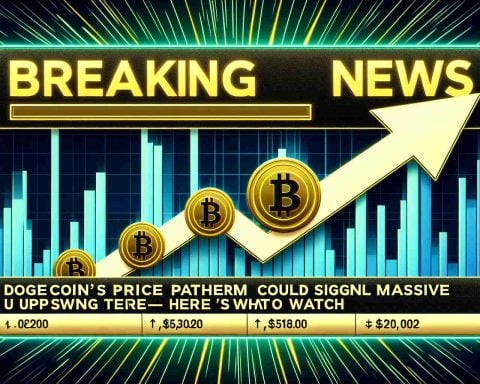Recent movements by cryptocurrency whales have ignited interest in the Polygon (MATIC) ecosystem, revealing significant transactions that may hint at future price movements. Large trades on platforms like Binance and OKEx involved substantial sums, roughly amounting to $154.3 million and $11.45 million, respectively, which could indicate a strategic accumulation among major holders.
At the moment, MATIC’s price sits at $0.3754, experiencing a slight downturn of 0.90% over the previous day. These large transactions by whales often foreshadow potential shifts, leading traders to ponder whether the current situation presents a prime buying opportunity.
Technical indicators reveal a mixed landscape. The relative strength index (RSI) registers at 51.74, suggesting a neutral stance, indicating that MATIC isn’t clearly overbought or oversold. The price is approaching the lower boundary of the Bollinger Bands, typically a sign that the asset may soon experience a price rebound.
On-chain data reinforces this cautious optimism, with indicators showing a modest increase in network growth and large transactions, suggesting that significant holders are accumulating MATIC tokens.
Despite the bullish signals emanating from whale activity and on-chain metrics, traders are advised to remain vigilant. The market’s current momentum remains delicate, and stronger signals may be required before making substantial investment decisions. As always, prudent risk management is essential in the ever-volatile crypto landscape.
Whale Movements Signal Potential Opportunities in Polygon’s Market
The recent activity of cryptocurrency whales has not just stirred interest but also raised important questions about the implications for the Polygon (MATIC) market. While significant transactions are a clear indicator of movement, they also come with a range of complexities that investors need to understand.
Key Questions Arising from Whale Movements
1. What drives whale behavior in the Polygon ecosystem?
Whales typically engage in large transactions based on market trends, speculative reasons, or to capitalize on perceived undervaluations. In the case of Polygon, the whale activity could reflect confidence in its technological advancements or potential partnerships in the decentralized finance (DeFi) space.
2. What are the broader implications of these movements on market sentiment?
The accumulation of MATIC by large holders can signal bullish sentiment, potentially attracting retail investors. However, it could also lead to price manipulation if whales decide to sell off suddenly, creating volatility.
3. How does whale activity affect smaller investors?
Smaller investors must approach the market with caution, as whale movements can create misleading perceptions of price stability. The ability of whales to influence price swings disproportionately impacts those with limited capital.
Challenges and Controversies
One of the significant challenges is the risk of market manipulation. Given that whales hold a considerable percentage of MATIC tokens, their trading decisions can lead to sharp price fluctuations that do not necessarily reflect the underlying fundamentals of the asset. This creates a landscape where retail investors may be unfairly affected by the strategic moves of larger players.
Another controversy lies in the transparency of whale transactions. Often, the motivations behind their activities are not clear, leading to speculation and, at times, panic among smaller investors. The lack of consistent communication from major stakeholders regarding their strategies exacerbates worry about the marketplace’s integrity.
Advantages of Whale Movements
– Market Liquidity: Large trades improve overall market liquidity, enabling smoother transactions for all investors.
– Price Discovery: Whale movements can help in the price discovery process, as their significant actions may indicate future trends and help inform baselines for both buyers and sellers.
Disadvantages of Whale Movements
– Volatility: The potential for price manipulation can lead to higher volatility, making the market less predictable for smaller investors.
– Psychological Impact: Whales’ activities can create herd behavior, where retail investors may rush to buy or sell based on the perceived trends set by large players, often leading to poor investment choices.
Conclusion
In summary, while whale movements in the Polygon market can indicate potential investment opportunities, they present both risks and rewards. Retail investors must navigate this delicate balance with careful analysis and risk management strategies to avoid the pitfalls associated with the erratic nature of whale-driven price dynamics.
For more information on Polygon and cryptocurrency trends, visit Polygon Technology.
















